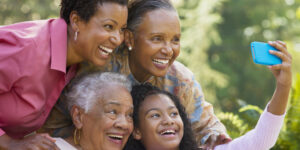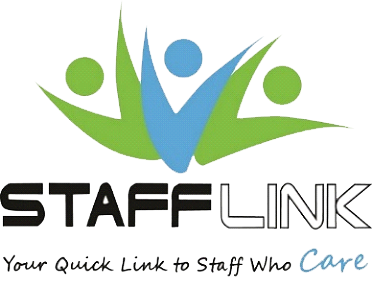Mothers Rock as Family Caregivers!

Mothers Rock as Family Caregivers!
Mother’s Day was this past Sunday. I am a mother. I have been a family caregiver. I own an agency that provides assistance to family caregivers.
Mothers and Women are Primary Family Caregivers
Mothers across America are the primary family caregivers in their homes for their children and partners. They may not be the sole caregiver, but even if they are in a committed relationship or are married, they are frequently the primary caregiver in their household. In most cases, mothers do the majority of the direct and indirect caregiving tasks for the household. This includes, but is not limited to: caring for the children, cleaning and maintaining the house, doing laundry, shopping for the household items, meal planning, preparation or securing, chauffeuring family members, and managing and coordinating the family schedules. And although the mother might not perform every home and lawn maintenance tasks, they frequently spearhead and are intimately involved with the selection and supervision of the hired helpers or contractors.
There was a study conducted some time ago that found that in terms of the division of family responsibilities between women and men, that women were responsible for task that were done daily (cooking, cleaning, laundry, chauffeuring, etc) and men took on tasks that were periodic (taking out the trash, cutting the grass, shoveling the snow, paying bills, etc). Every household is different, but this is what happens in the majority of households in America.
Sandwich Caregiving
Women and mothers are the primary caregivers in this world. As our parent’s age, women frequently find themselves as caregivers on both ends of the spectrum. They are providing caregiving in their own home and now providing caregiving and support to aging parents. This is frequently called “sandwich caregiving”. They are driving kids to school and activities and driving mom to doctor’s appointments. They are making sure dinner is prepared or secured for their household and taking meals to their aging in-laws. They are shopping for groceries for their household and picking up groceries for their aging father that no longer drives. They are taking the family dog to the vet and picking up medicine from the neighborhood pharmacy for their parents. They are picking up dry cleaning for their spouse and dropping by their elderly aunt’s home to do some laundry.
Family Caregiving Challenge
One of the biggest challenges with aging family members is that they resist help from non-family members. So even seniors with the financial means to hire help, sometimes choose to do without required assistance and to wait for an overburdened family member or friend to help them.
Senior caregiving is more than just providing hands on care, running errands and performing tasks. It includes, but is not limited to other things like medication management, care coordination and advocacy.
Women who may no longer have children residing in their house and are slightly older, in their 50s, 60s, or early 70s, may now be providing childcare assistance and some supervision of grandchildren while tending to the needs for their own parents in their 80s, 90s or who are now centenarians.
Former First Lady Rosalyn Carter said, “There are only four kinds of people in the world: those who have been caregivers, those who are currently caregivers, those who will be caregivers, and those who will need caregivers”.
Family Caregiving Will Increase
Currently, nearly 10,000 baby boomers a day turn 65 years old. This is going to continue for next 30 years. The United States population that is over 65 years of age will grow from just under 50 million to nearly 90-100 million in the next 30-40 years! These numbers will continue to have a significant impact on family caregiving. They will continue to have a significant impact on mothers and women.
Caregiving by the Numbers
Here is what we know now: Nearly 70 percent of all caregiving is performed by family members. Nearly 70 million individuals are currently providing care at some level to family members. Two-thirds of those are women. Men do provide caregiving, but on article stated that women provide significant more hours per week than men do.
The typical senior family caregiver is a woman, age 49 years. She is married and is employed full-time or part-time outside the home. Forty (40) percent of them have children or grandchildren under 18, who reside with them. Those that do not have children or grandchildren living with them still are intimately involved with assisting their children and grandchildren that do not live with them.
Women Leave the Workforce to be Caregivers
There is documentation that many women leave the work force in order to provide caregiving to family members.
Our StaffLink office has first-hand experience with this phenomenon. Last spring, at female office employee with StaffLink, suddenly left the office one day due to a family crisis. Her disabled brother had been involved in an accident. She left that day to never return to our office. She became the full-time caregiver, care manager and advocate for her brother. She had been employed with us for 26 years. She had not planned to stop working, nor could she have predicted the crisis that would draft her into full-time caregiving. Since his health crisis she has moved him into her home. She is the single mother of six adult children and a grandmother.
Family Caregiving Value to the Economy
Caregiving is demanding. Caregiving needs can be unpredictable. Unfortunately, caregiving is generally underappreciated and undervalued. It should not be underappreciated or undervalued. Unpaid family caregiving hours are actually valued at around $200-400 billion dollars a year in the United States. Yes, I said billion.
Caregivers frequently neglect their physical health and financial health. This can be especially devastating to women caregivers. Neglecting either your financial or physical health, will have long term effects on one’s future.
Family Caregivers Should Practice Self-Care
So as a caregiver and mother, during this Mother’s Day week, I encourage you to give yourself the gift of self-care. I want you to know self-care is not selfish. I believe it is required self-maintenance if you are going to continue to be a compassionate and competent mother and caregiver.
In two recent blogs, StaffLink’s offered self-care tips. Please visit the links below.
Also, linked below are several articles regarding gender and caregiving.
Have a wonderful Mother’s Day week! And thank you for your mothering and caregiving!
https://www.theatlantic.com/family/archive/2019/05/breadwinning-wives-gender-inequality/589237/
https://www.today.com/news/women-do-2-more-hours-housework-daily-men-study-says-t172272
https://www.caregiver.org/resource/women-and-caregiving-facts-and-figures/
#FamilyCaregiving
#WomenAndCaregiving
#WomenCaregivers
#TheRoleOfWomenInCaregiving
#MothersDayAndCaregiving
- StaffLink Celebrates 38 Years in Business! - March 30, 2025
- What Is the Hourly Cost for Home Health in 2025? - March 12, 2025
- Seeking Retirees and Mature Persons to Provide In-home Care to Seniors - February 26, 2025
